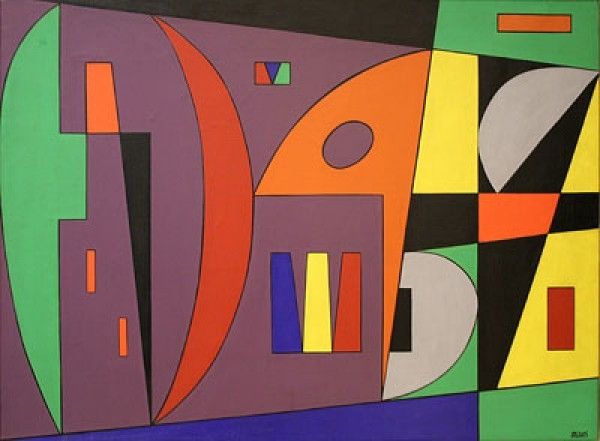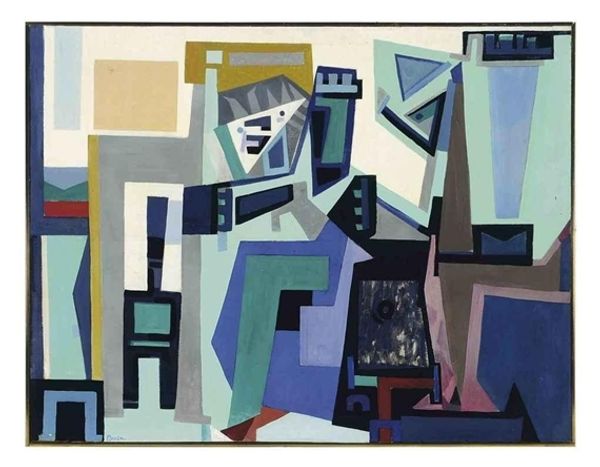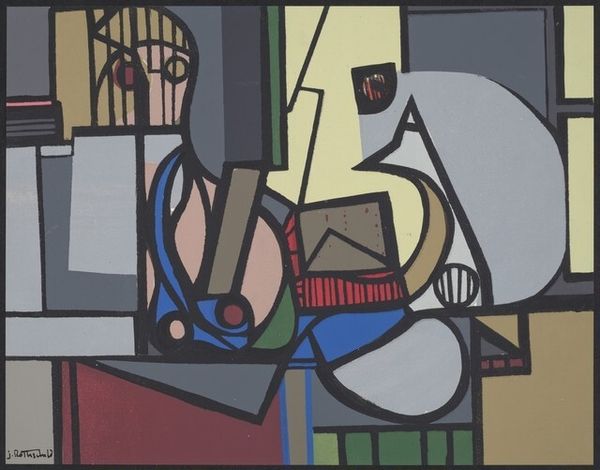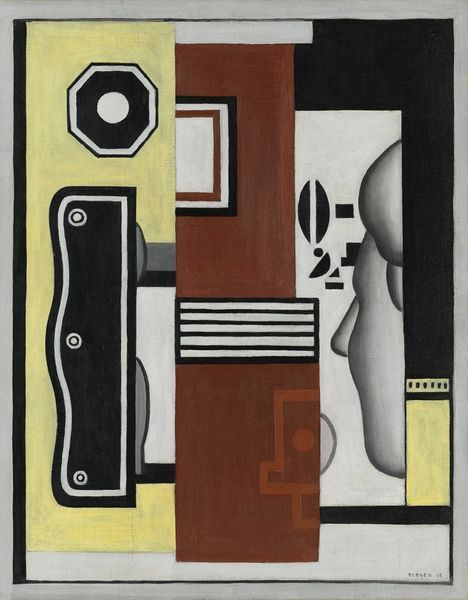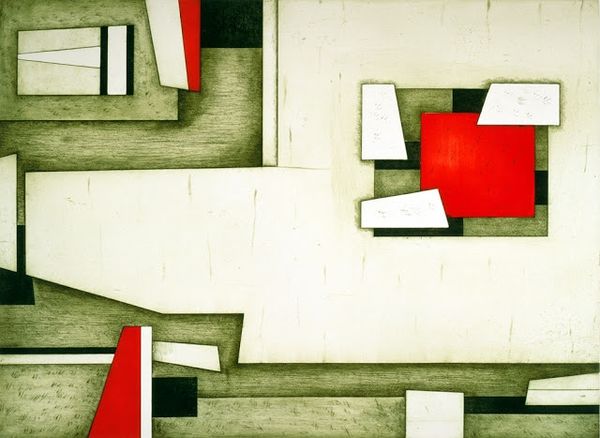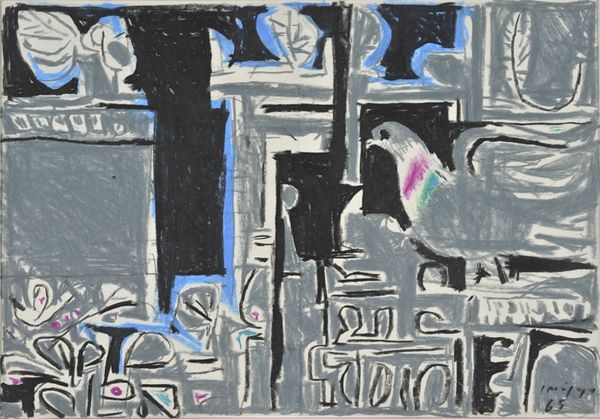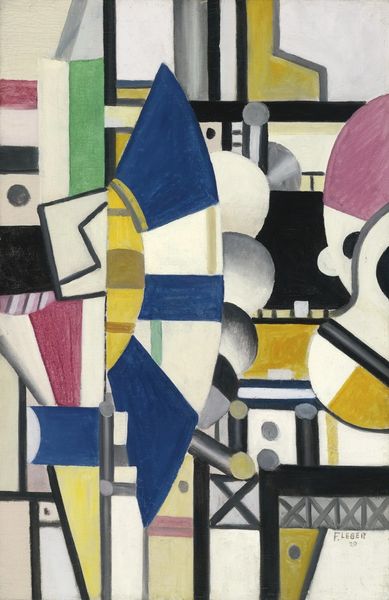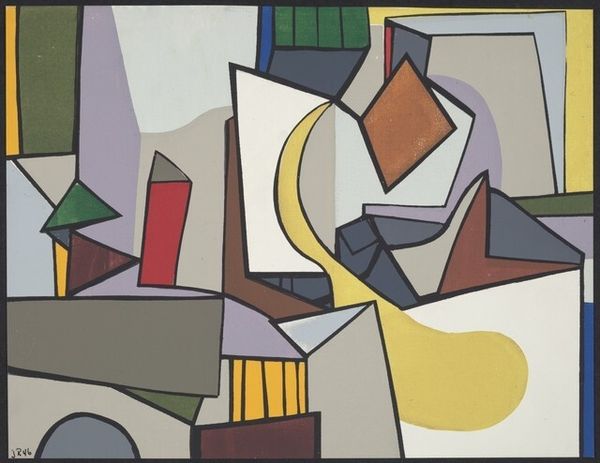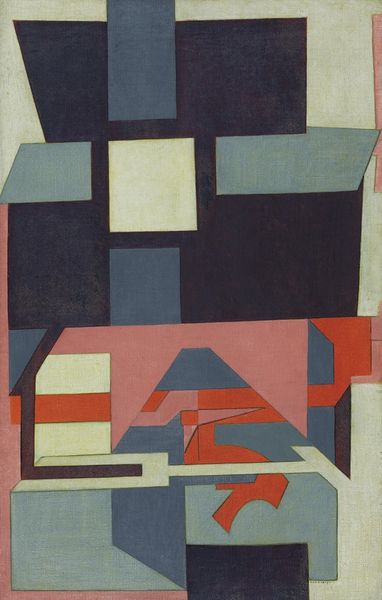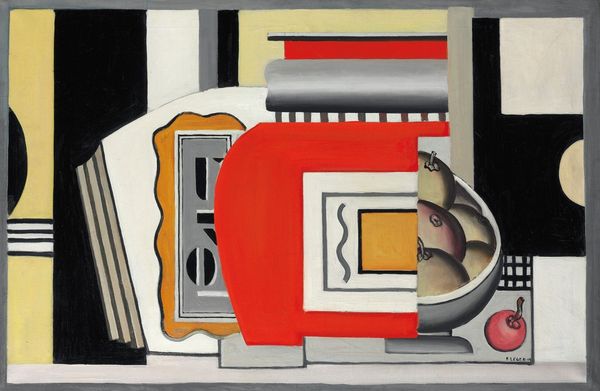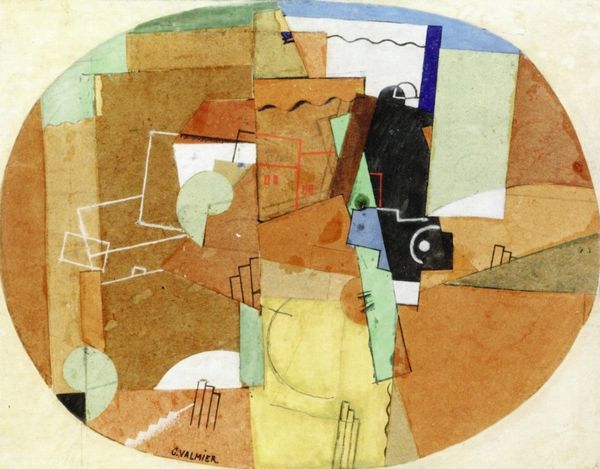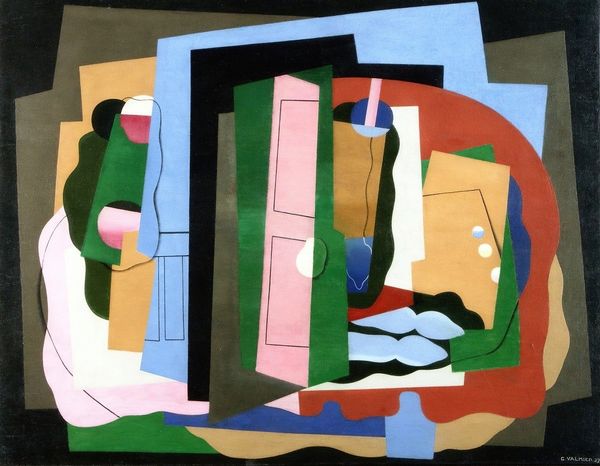
#
cartoon like
#
cartoon based
#
pastel soft colours
#
muted colour palette
#
teenage art
#
pastel colours
#
abstract
#
teen art
#
pastel tone
#
cartoon style
#
cartoon carciture
Copyright: Modern Artists: Artvee
Curator: Here we have Fernand Léger’s “Compass and Paint Tubes,” created around 1926. My initial response is a sense of ordered chaos. There's a strong geometry at play, but also a kind of whimsical arrangement. Editor: That’s interesting. The color palette struck me first - almost deliberately clashing industrial colors next to softer, almost pastel hues. It certainly pushes against any smooth or easy aesthetic experience. What does Léger tell us about the industrial conditions that spawned this aesthetic dissonance? Curator: Léger was fascinated by industrial objects. The compass and paint tubes – everyday tools – are elevated here through bold colors and a deliberate simplification of form. It's his way of celebrating the modern world. He seems invested in the factory conditions under which paint tubes are fabricated. There’s a very appealing symmetry to them, don’t you think? Editor: The inclusion of those tools definitely opens up a conversation around artistic labor and value. Are we meant to reflect on the often invisible, yet material circumstances and conditions that allow art making? The tubes remind me, in shape at least, of early automobile engines... Do you suppose this invokes social questions regarding fossil fuels or their impending depletion? Curator: That’s a good observation about artistic labor, yes. Léger often sought to merge art with everyday life, to show the beauty and inherent order within functional objects. It aligns with broader Bauhaus sensibilities, in my opinion. I am intrigued by this sense of an energy industry commentary. Editor: Absolutely. And by isolating and juxtaposing them, is he asking us to consider the socio-economic and industrial contexts that shape artistic production and consumption? It speaks to this era in Western intellectual thought that begins to center class in many artistic considerations. Curator: Precisely! The flattened perspective, the bold outlines – it all strips away the preciousness that was typically associated with art, moving away from that academic model. Editor: Well, it definitely encourages one to look at the stuff of art-making itself as valid subjects for art! These mundane instruments can also be interpreted to reveal profound perspectives on social progress. Curator: A powerful reminder to examine art as more than just surface beauty and individual expression, and perhaps also as something inextricable from working life. Editor: Indeed. Viewing this, it's impossible not to reflect on the circumstances that continue to determine how and by whom culture is produced and for whom it is ultimately intended. Thank you.
Comments
No comments
Be the first to comment and join the conversation on the ultimate creative platform.
